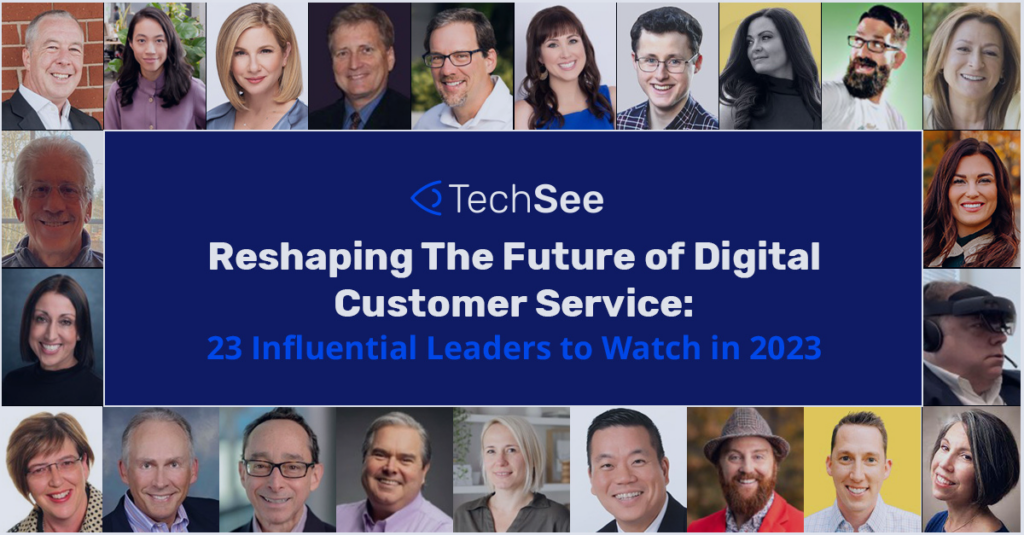Contents
- Visual Assistance is Powerful – If Adopted
- Boosting Employee Adoption of New Technology
- How to train employees on new systems
Visual Assistance is Powerful – If Adopted
Visual Assistance is an increasingly popular technology that enables enterprises to provide remote support to end users. It establishes a live video stream with the customer and overlays Augmented Reality annotations to provide step-by-step resolution guidance on their mobile screen. The technology has been proven to improve ROI by boosting efficiency in contact centers and field services, reducing truck rolls and dispatches, decreasing product return rates, and improving the overall customer experience. But first, it must be adopted. The greater the adoption of new technology, the more use cases can be applied and the greater the likelihood that the enterprise will see double digit improvements in their KPIs.
Like any enterprise technology, the success of Visual Assistance rests heavily on employee engagement. A company’s management team can invest in the best solution on the market and IT can install and configure it to reflect all their business processes, but if employees do not adopt it, it will never be a success. Without high levels of adoption of new technology, the company will not realize the ROI they were likely expecting. In other words, a technology that no one uses is useless.
Boosting Employee Adoption of New Technology
Lack of employee adoption can result in reduced productivity and morale. Oftentimes, simply training staff on a new system is just not enough to achieve the high levels of technology adoption that are needed to ensure the success of a new technology. So what is?
Here are 5 strategies that key brands have used to drive the adoption of Visual Assistance in their businesses.
1. Be proactive with software adoption best practices
Consider employee adoption before the Visual Assistance solution is even selected. Recognize that a new app’s benefits may not be clear to the employees, who may view new systems and processes as time wasting or even disruptive. Take the time to ask employees about any user difficulties or pain points, and which improvements they would appreciate. Research best practice methodologies for introducing new software in the workplace, and particularly for deploying the new Visual Assistance solution, including best ways to implement and utilize the new system so maximum value is created.
In addition, gather relevant success stories and share these experiences with your staff. Customer success stories provide new users with examples of how other companies effectively used Visual Assistance. This knowledge helps new users feel more confident and comfortable with adopting the new technology.
Of course, the selected vendor or third party should have the best practices, know-how and the track record in their Visual Assistance implementation processes.
2. Identify necessary integrations
According to Gartner, two out of three employees reported having to exert too much effort when using company-provided technology. Whether it’s a non-intuitive interface, disconnected systems or numerous logins to manage, employees who find the Visual Assistance technology cumbersome or time-consuming will not be quick to adopt it. Make sure the chosen visual assistance solution offers off-the-shelf integrations with the organization’s existing CRM/FSM and enables launch with single sign on to make it easier for employees to use it and to quickly access data relevant to each customer.
Visual assistance adoption case study: European Telecom
A leading European CSP provides internet, 4G mobile and TV services to 20.5 million domestic and business customers. High levels of Visual Assistance adoption were a top priority for the telecom, so they sought a solution that could integrate smoothly into the reps’ desktops and specifically with Salesforce Service Cloud. Because TechSee comes complete with preset Salesforce integration, the deployment process was rapid. As a result, agents can easily begin visual sessions from the Salesforce console with single sign on, and access complete visual customer histories. Though early, the company has already witnessed a significant increase in customer satisfaction and is projecting clear improvements to First Contact Resolution and technician dispatch rates over the coming months.
3. Make the adoption of new technology experience effortless
Ensure the new Visual Assistance solution is extremely simple to use and actually reduces user effort. The technology should offer a browser-based experience and intuitive interface to make it effortless for customers to use. Agents should find the solution simple to use and effortless to deploy. Keep in mind that even the smallest slowdown in workflow may present a barrier to adoption of new technology.
Visual assistance adoption case study: Costa Express
Costa Express operates and supports 10,000+ self-serve coffee machines around the UK. They implemented Visual Assistance in an effort to lower their costly engineer dispatch rate and reduce machine downtime. However, the solution’s complexity and app download requirement had become a barrier to adoption amongst agents and customers, resulting in low ROI. Costa Express UK partnered with TechSee to deploy a visual remote assistance platform that required no app download. The ease-of-use for both agents and customers resulted in exceptional positive feedback and high levels of adoption of the new technology from the first month of use. The quick adoption resulted in a 41% decrease in engineer dispatches and a 43% increase in first call resolutions, significantly improving overall ROI.
4. Obtain Management Buy-in
It is essential for company leadership to be fully on board with driving adoption of new technology within the organization. Management dashboards that include data on employee usage and customer acceptance, clearly linked with the business’ KPIs, will give leadership the visibility they need to understand how visual assistance drives core business priorities. The management team must also make it clear to staff that the technology is important for the business and reward engagement at all employee levels.
5. Report Regularly for Monitoring & Reinforcement
Maintaining complete transparency in reporting is key to making sure your employees are onboard and see the benefits of adoption. Have a performance dashboard that tracks results in real time, issue periodic updates to users on adoption levels and the impact the new Visual Assistance solution has had on KPIs. Use the system to identify power users of the new technology and make them champions, rewarding them when appropriate.
Visual assistance adoption case study: WCTel
WCTel offers voice, data, video, wireless and security services in western South Carolina. The company deployed TechSee’s Visual Assistance solution and had been experiencing slow but steady results. Staff had been a bit slow to adopt the new software until Management identified a power user, one agent who was seeing great success with the technology. This Super-Agent influenced his fellow agents and ultimately reshaped the company’s entire remote service strategy, enabling the team to save $25K in just 7 months.
How to train employees on new systems
Visual assistance works. The trick is to get your people to use it. Whether the strategy is to harness best practices, tight integrations, effortless experiences, management buy-in, or top-tier reporting, the goal is to drive the highest adoption levels possible across the widest range of use cases. After all, the more the technology is used, the higher your ROI.






